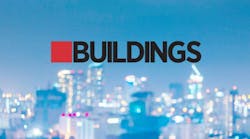The building automation industry is redefining itself by way of rapid innovation. Smart building solutions are capable of doing more tasks and executing them faster and easier than earlier generations of devices, driving savings and efficiency.
Here are some of the building automation trends you may notice in 2020.
Four Buildings Automation Trends
1. IP products explode into the marketplace.
All of the major players in the building automation space have introduced Internet Protocol (IP)-based systems, says Scott Cochrane, president and CEO of Cochrane Supply and Engineering. In an IP-based building automation system, every device on the network has its own IP address, just like how computers are networked.
“With serial devices, we only had one way to connect the device to the host that communicates to the end user,” Cochrane explains. “In the IP world, there is an infinite number of ways I can connect that device to the end user. Every IP device is like a little computer that can do 100 times more than the predecessor ever did.”
Cochrane likens the growth of IP automation products to the way Voice over IP (VoIP) phones replaced analog landline models. “We were limited with where we could run that wire. It had to be that particular wire, and we had to get it from the phone company. Now look where we are today,” Cochrane explains. “IP means the capability to communicate with people and network with other systems. That is thousands of times better than the old way, when you only had one way of doing it – hardwiring it, connecting it to a gateway and connecting the gateway to a computer.”
IP devices can be implemented gradually, so there’s no need to replace the entire building automation system if your budget won’t allow that, says Cochrane. Your building probably already has IP infrastructure for computers and phones, so you may be able to use some existing wiring. However, Cochrane cautions would-be IP adopters not to just use the existing IP network without coordinating with the IT department.
“We recommend that you run a separate network. If you do connect to an owner’s network, run it through a firewall unless the IT department is collaborating and takes responsibility for cybersecurity,” says Cochrane.
2. Master systems integrators bridge facilities management and IT.
A new trade is migrating into facilities management from the security system industry. Master systems integrators specialize in building and maintaining data plumbing, or the way cloud computing systems are connected. The job is part IT, part facilities, and is the natural result of facilities management strategies that increasingly rely on networked devices.
[Related: How the HVAC Field is Changing]
“[Having a master systems integrator] is something a contractor can do as a service to the end user, or the end user can develop it as an in-house capability, like their own department that just handles the data plumbing and works with vendors who put products on the data plumbing,” Cochrane explains. “We used to think that the right way to attack it was to put an IT person with a facilities person, but what we’ve since learned is that young people coming into the industry come with the ability to understand the internet and IP. It’s really about getting those people to learn facilities.”
The ideal person to recruit for such a position may have studied engineering or IT and is interested in the “jack of all trades” aspect of facilities. They’ll manage the digital infrastructure supporting everything from communications to comfort and safety, says Cochrane.
3. Staffing needs change constantly.
The emergence of master systems integrators illustrates why staffing decisions are so high stakes. Facilities professionals need broad knowledge, not only in building systems, but in engineering, computer science and other areas that are crucial for managing today’s buildings. Part of finding these people is making sure they know facilities management exists, Cochrane says.
“We need to learn how to generate interest for our business to bring in new, young talent,” adds Cochrane. “I’m looking to bring you on, and no, you’re not just going to be looking at a boiler all day. You’re going to be running a computer platform. You’re going to be responsible for the comfort, safety and security of all occupants, and we have these tools you’re going to use that you’re used to, like your mobile device and cloud-based services.”
4. Facilities improvements actively drive revenue.
Facilities departments have historically had an undeserved reputation as a cost center, but today’s facilities professionals are using automation and digital tools to directly benefit the bottom line.
Cochrane names retailer Target’s indoor positioning work with Acuity Brands as a prime example of this new facilities management task. Smart lights in the stores communicate with the Target app that shoppers use by pushing coupons and directing shoppers to where to find items on their shopping lists.
“The lighting retrofit is improving the top line for a retailer in terms of a better shopping experience and adding more business,” says Cochrane. “Depending on the use case of the building itself, by adding the right technology, we may increase the business for the companies within the building.
What if you built the best user experience in the world for a hospital? You may drive more patients to that hospital. Now you’re adding revenue for the building. That’s a whole new layer of payback. This can help you in more ways than you ever imagined.”
Two handpicked articles to read next:



